Local Aid Support Newsletter Fall 2024U.S. DOT Federal Highway Administration sent this bulletin at 10/1/2024 04:46 PM EST 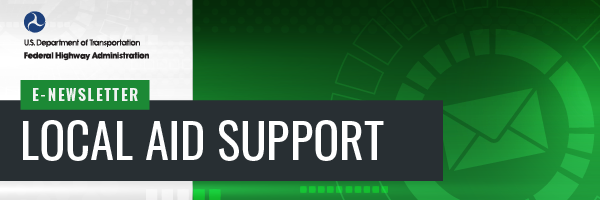 15th Edition
Fall 2024
15th Edition
Fall 2024
Welcome!
|
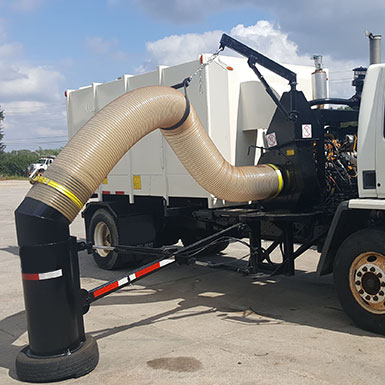 |
Source: West Lafayette Street and Sanitation Department, Indiana.
In West Lafayette, IN, leaf pickup is a vital service managed by the city’s street and sanitation department. Traditionally, this task required 2 employees: one to drive the leaf vac truck and another to operate the vacuum. However, limited staffing, safety concerns, and high equipment costs created significant challenges. To address these issues, the Department devised an innovative solution: converting old street sweeper units into leaf vac units. “...a new leaf vac unit would cost around $200,000. However, converting an old street sweeper unit averages about $10,000, depending on the cost of the used equipment,” explains Jeremy Stinson, City Street Commissioner. The repurposed street sweepers, equipped with engines similar to leaf vacs and modified by the department's in-house mechanics, allowed for safer and more efficient leaf collection.
The department's team, including members Paul Kull and Doug Perkins, faced several challenges but ultimately found a successful solution. Initially, they experimented with other options, such as a recycling truck, but these were uncomfortable and unreliable. The repurposed street sweeper units not only expedited the leaf pickup process but also improved safety and comfort for workers.
Congratulations to the West Lafayette Street and Sanitation Department as the 2024 Build A Better Mousetrap Bold Steps Award Winner. The Bold Steps Award recognizes any locally relevant high-risk project or process showing a breakthrough solution with demonstrated high reward.
For more information about this innovation contact Paul Kull, West Lafayette Street and Sanitation Department at (765) 775-5242.
“Fifth-Wheel Quick-Attach Sander.”
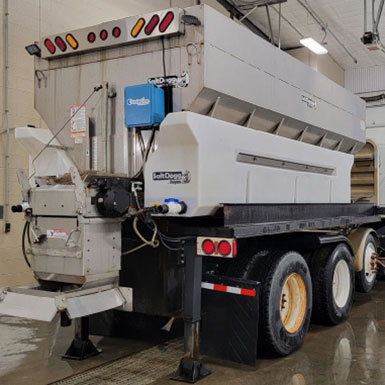 |
Source: McKenzie County Highway Department, ND.
The McKenzie County Highway Department in North Dakota sought to optimize their fleet's usage, addressing inefficiencies in how dump trucks were used for sanding roads in winter and semi-tractors with fifth-wheel connections for hauling gravel in other seasons. “...during the summer, many of our regular plow trucks would sit idle, which felt wasteful. We wanted to find a way to make these trucks more versatile,” explains Shane Shannon, the Department’s Fleet Manager. The department’s solution was to adapt their fifth-wheel tractors for use as plow trucks in winter, allowing for more efficient salting and sanding of hazardous roads while keeping the semi-tractors in use year-round.
They developed the Fifth-Wheel Quick-Attach Sander, which attaches a sander to a semi-tractor using a fifth-wheel and kingpin connection. This setup ensures secure attachment and balance, addressing challenges like weight distribution and traction. According to Shop Foreman Ralph Bernas, the switch between sanding and hauling gravel has been successful, proving more efficient than expected. The new system has reduced the need for additional dump trucks and maintenance costs, saving time and money. It also allows for increased sand and salt capacity and opens possibilities for using the system with other equipment like water tanks or hydro-seeder boxes.
Congratulations to the McKenzie County Highway Department for being the 2024 Build a Better Mousetrap Smart Transformation Award winner. The Smart Transformation Award recognizes a locally relevant significant change in any transportation activity or process that is SMART “Specific, Measurable, Achievable, Realistic and Time-bound” in nature that results in improved efficiencies.
For more information about this innovation please contact Ralph Bernas, McKenzie County Highway Department at (701) 570-2472.
“Slow and Safe, Save a Life.”
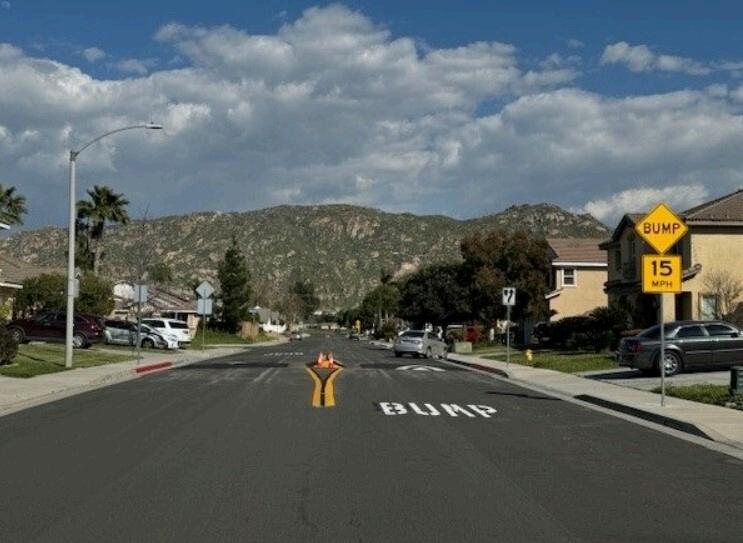 |
Source: California Dept. of Transportation for Build a Better Mousetrap.
The City of Moreno Valley, CA, faced a challenge with speeding traffic through residential neighborhoods while ensuring emergency vehicles could still pass unhindered. Traffic Engineer Julien Van Simaeys aimed to slow down traffic innovatively without impacting residential parking or emergency response. The solution was to create a modified speed cushion that would deter speeding drivers without affecting fire trucks. Unlike standard speed humps, which could jostle equipment and require detours, the new design allowed fire trucks to drive straight over the cushion.
A prototype was built of the modified speed cushion and the fire department was invited to test it to ensure their concerns were addressed. “...I was pleased that the fire department engaged with our idea. It was crucial for us to get it right,” says Van Simaeys. The collaboration proved successful, as evidenced by favorable video monitoring results and minimal citizen complaints. The city is considering expanding the use of these speed cushions to other neighborhoods, though careful planning is required to ensure proper visibility and accommodate various engineering factors. Thanks to strong support from colleagues and management, this effort in innovation in traffic management paid off with positive results.
For more information about this innovation contact Julie Van Simaeys, City of Moreno Valley, CA at
(951) 413-3151.
"Trackless Automated Loader.”
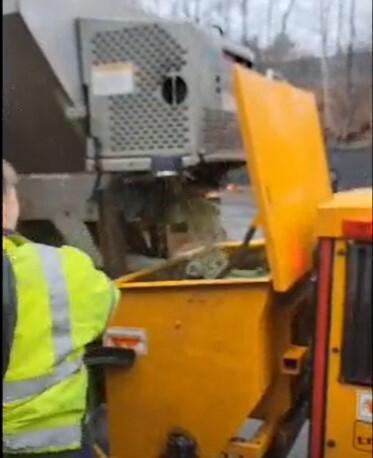 |
Source: Town of East Hartford, CT.
During winter operations, the Town of East Hartford, CT, is tasked with clearing just over 19 miles of sidewalks. This task traditionally required a small tractor equipped with a plow and sander. However, the sander could only hold sand mix material sufficient to cover 1 yard, necessitating constant refills. To manage this, a dump truck would follow the tractor. When the sander needed refilling, an employee would climb into the truck's bed to shovel more sand mix material into the sander. This method increased workers' exposure to chemicals and heightened the risks of slips, falls, and other injuries.
The development of the automated loader emerged from a brainstorming session among the work crews. “...we were going to retire one of our old sanders. Instead, we refurbished it to remove the spinner assembly and create a chute that could automatically dispense the material straight out in a steady stream,” explains Gary McKeone from the Town of East Hartford. “...we didn’t realize it was going to fill up the sander so fast! 30 seconds.” The primary challenge was designing the chute to ensure it was secure and properly positioned. The cost to repurpose the old sander was mainly labor, with material expenses ranging from $200 to $500. “...to repurpose old equipment is well worth it. The sander was headed for auction, but the motor was still good,” Gary notes. “...the person who came up with this idea was nearing retirement and didn’t want to be climbing into the back of a dump truck during a storm and shoveling.”
For more information about this innovation contact Gary McKeone, Town of East Hartford, CT at
(860) 209-8439.
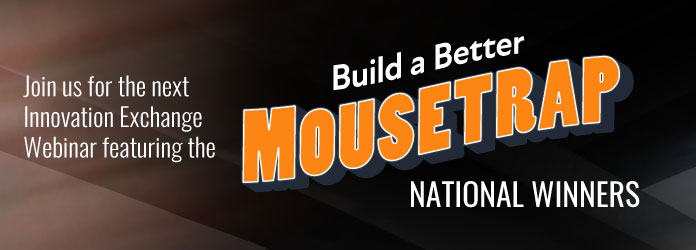 |
Source: FHWA CLAS Build a Better Mousetrap.
Every year, FHWA honors and celebrates local government and tribal agencies that lead the way in enhancing transportation performance through innovative solutions. The upcoming Innovation Exchange monthly webinar will feature the 4 winners of the 2024 Build a Better Mousetrap competition.
Please join us on October 17th at 2 p.m. EST to learn about these innovation solutions and how to participate in the 2025 Build a Better Mousetrap Program.
Registration is required! Click here to register.
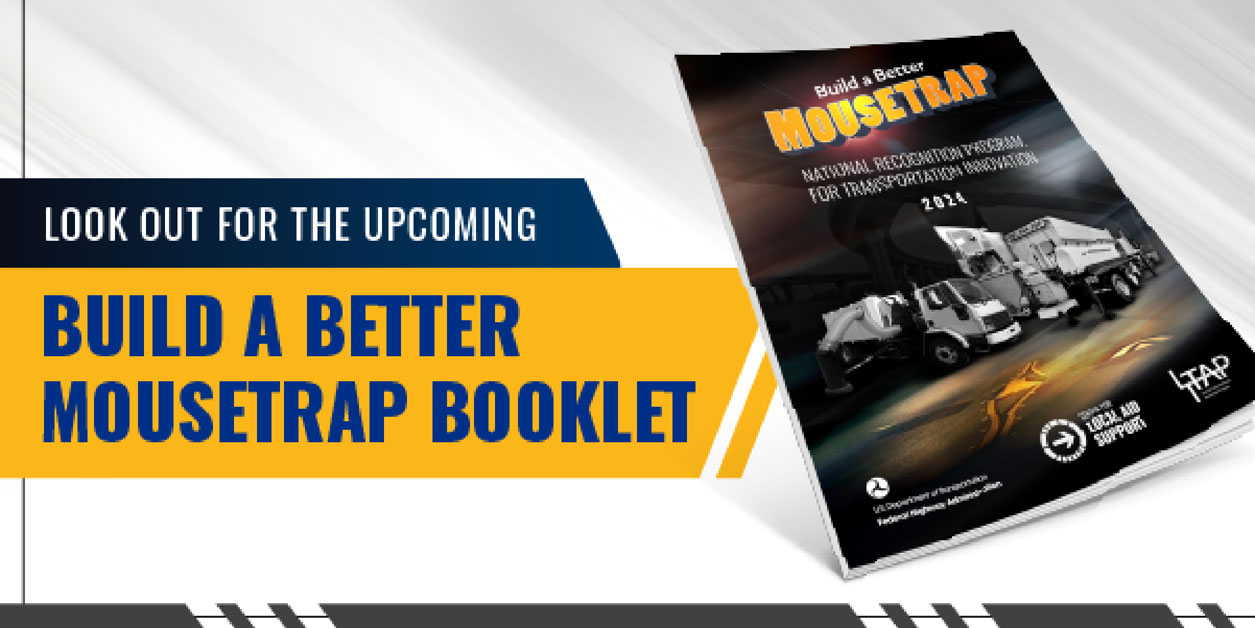 |
Source: FHWA Local Aid Support Build a Better Mousetrap
Be sure to download the 2024 booklet for information when it comes available and visit the website to view the winner video.
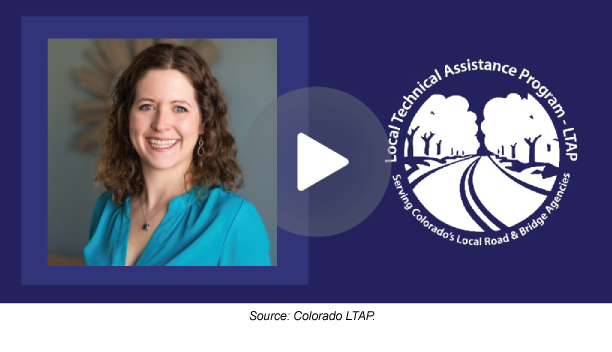 |
Founded 39 years ago, the Colorado LTAP has established itself as a vital resource for Colorado's 273 municipalities and 64 counties. As the center approaches its 40th anniversary next year, it continues to play a crucial role in supporting local agencies responsible for maintaining most of the state’s roads. This milestone reflects the program's enduring commitment to enhancing transportation infrastructure and service delivery across the region.
Heather Carlson, Director of the Colorado LTAP, shares insights about the center's impactful work, check out the video link here to hear all about it!
Contact Heather Carlson for more information or visit www.ColoradoLTAP.org today!
 |
Source: New York State LTAP Center.
The New York State LTAP Center (NYSLTAP) has initiated a series of infographics to assist highway and department of public works< crews in effectively communicating with their community on items of concern. These Community Corners infographics have been incredibly popular, with over 7,000 requests in 2024 alone to print and add them to community websites. In addition to answering common questions for the public, these infographics have proven to be a valuable tool in informing elected municipal officials about NYSLTAP’s mission and services, demonstrating the value provided to the local highway community and the citizens of New York State.
Contact the Melissa Leigh Foley, Program Manager at the New York State LTAP Center - Cornell Local Roads Program for more information or visit their website.
Ready to transform transportation in your community? The Office of Tribal Transportation has a NEW course entitled Tribal Transportation Program (TTP) 101.This course offers a clear overview of how Tribes can leverage Federal funds to enhance safety and access for native villages, reservations, and Indian lands. Participants will gain a foundational understanding of key concepts such as discretionary grants, Tribal Transportation Improvement Programs (T-TIPs), Referenced Funding Agreements (RFAs), and environmental requirements like National Environmental Policy Act (NEPA).
Tailored for Tribal Council members, transportation practitioners, and local agency professionals, this introductory course equips participants with the knowledge to navigate TTP funds effectively. Key topics include an in-depth look at the Tribal Transportation Program, how TTP funds are allocated, and practical strategies for utilizing these funds to benefit the community.
Register today!
From the FHWA Office of Safety
|
The Model Inventory of Roadway Elements 2.1 (MIRE 2.1) is the latest guideline resulting from two decades of Federal safety data policy and national best practices. The purpose of MIRE is to provide States with a national model of relevant roadway and traffic data inventory they can use to support data-driven decision making. Consistent with other MIRE updates, MIRE 2.1 includes a revised format to reflect modern database environments, better aligns with other Federal datasets and requirements across FHWA, updates operational and design elements that have become more widely implemented and serves as a resource for meeting Federal safety data requirements. This will be a critical tool for safety engineers, HPMS coordinators, and GIS specialists. Bookmark MIRE 2.1 today. Image Source: FHWA Office of Safety |
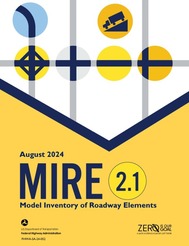 |
From the FHWA Office of Safety
The Vision Zero Toolkit is a new FHWA publication for local, regional, and Tribal jurisdictions that are establishing, planning, and implementing safety efforts to help realize the goal of zero roadway deaths. Download the Vision Zero Toolkit today. Image Source: FHWA Office of Safety |
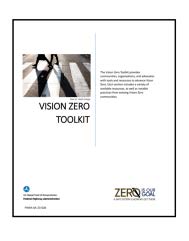 |
From the FHWA Office of Safety
For agencies and practitioners seeking zero roadway fatalities through the Safe System Approach, knowing where to start can be a challenge. FHWA has released a new resource to help agencies prioritize engineering and infrastructure-based countermeasures. The 38-page Safe System Roadway Design Hierarchy outlines a four-tiered approach that is general in nature and applicable to any scenario, from a city street to an interstate freeway. Read the Safe System Roadway Design Hierarchy. |
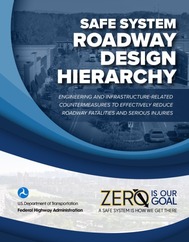 |
Please visit https://www.fhwa.dot.gov/bipartisan-infrastructure-law/grant_programs.cfm to learn more.
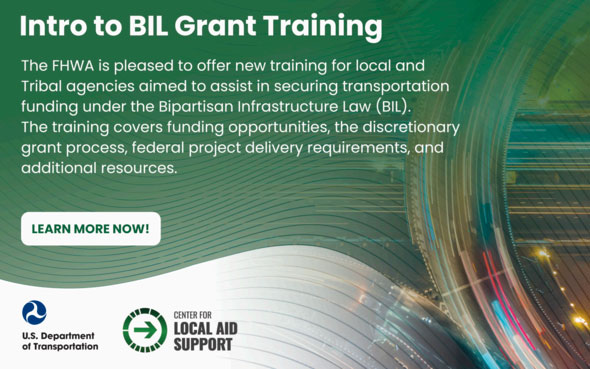
Interested in learning more about navigating the grant process and delivering infrastructure projects? Check out our latest promotional video that highlights the BIL training on our YouTube channel |
 |
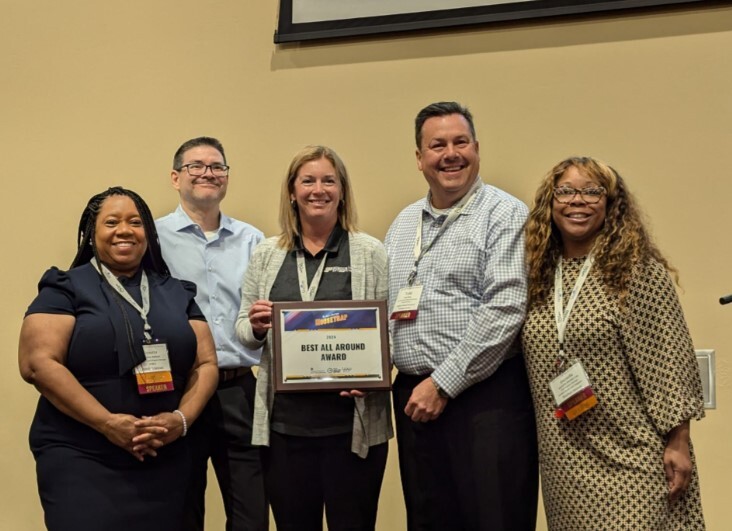
CLAS Program Manager Trinette Ballard, CLAS Acting Director Jeff Zaharewicz, Indiana LTAP Research Manager Jennifer Sharkey, Director of Innovation and Process Improvement for the Indiana Department of Transportation (INDOT)Todd May, and CLAS Program Manager Danielle Mathis-Lee joined the 2024 Build a Better Mousetrap All Around Winner at NLTAPA in Albuquerque, New Mexico.
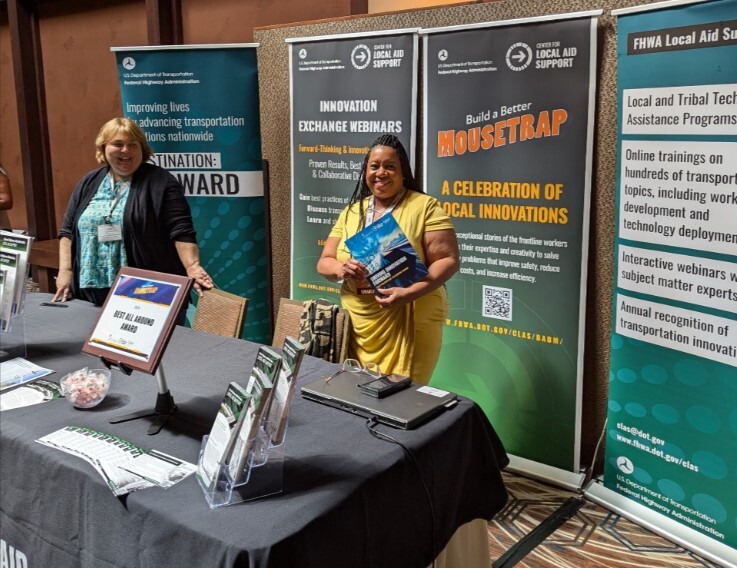
Check out those smiles! CLAS Senior Instructional System Designer Contractor Lisa Anstine and CLAS Program Manager Trinette Ballard at the CLAS exhibit booth at NLTAPA in Albuquerque, New Mexico.
The CLAS serves as a vital link between local agencies, Tribes, and Federal Land Management Agencies, facilitating access to cutting-edge, market-ready solutions for improving highway safety, reducing project delivery times, and saving costs. Our Innovation Exchange webinars bring together leading transportation experts to share breakthrough ideas and unconventional practices with proven success.
These webinars, led by subject-matter experts and thought leaders, aim to disseminate new concepts, ignite discussions, and foster innovative leadership to address current and future transportation challenges. Participants are encouraged to (1) learn best practices from experts, (2) engage in dialogue with other transportation professionals nationwide, and (3) exchange successful strategies. We invite our transportation partners to actively participate in these sessions by watching presentations and joining Q&A discussions. For any questions or feedback about the Innovation Exchange webinars, please email CLAS@dot.gov.
October 17, 2024 - Build a Better Mousetrap 2024 Winners
Meeting link
Meeting ID: 160 770 4536
Passcode: 076982
November 21, 2024 - Data Collection Tools to Assist Tribes with Roadway Inventory and Planning
Meeting link
Meeting ID: 160 970 5444
Passcode: 487511
December 19, 2024 - Nondestructive Evaluation (NDE) Techniques
Meeting link
Meeting ID: 161 246 0631
Passcode: 345324

DID YOU KNOW: The FHWA Center for Local Aid Support sponsors 24/7 access to hundreds of ‘need to know’ transportation topics for local and tribal agencies at no cost. Don't forget to use your government email to register for courses. Questions? Please contact us at CLAS@dot.gov. A series of no-cost online training modules available via the Local Aid Support webpage. Check with your local and regional LTAP/TTAP Center for available online training. Over 180 web-based courses available. Over 190 web-based courses. Institute of Transportation Engineers 15 online modules for smaller jurisdictions. Online library of 112 informational videos. FHWA’s bi-monthly webinars on innovative market-ready technology. |
January 5-7, 2025
Transportation Research Board
Washington, DC
Come visit the CLAS exhibit booth at TRB!
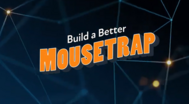 |
Visit our Local Aid Support channel on YouTube, where you will find a wide range of videos, including previous Build a Better Mousetrap spotlights, highlights about our Geosynthetics Mobile Application, and more! |
Notice
The U.S. Government does not endorse products or manufacturers. Trademarks or
manufacturers’ names appear in this presentation only because they are considered essential to
the objective of the presentation. They are included for informational purposes only and are not
intended to reflect a preference, approval, or endorsement of any one product or entity.
Except for the statutes and regulations cited, the contents of this document do not have the
force and effect of law and are not meant to bind the States or the public in any way. This
document is intended only.
|
Update your subscriptions, modify your password or email address, or stop subscriptions at any time on your Subscriber Preferences Page. You will need to use your email address to log in. If you have questions or problems with the subscription service, please contact subscriberhelp.granicus.com. This service is provided to you at no charge by U.S. DOT Federal Highway Administration. |